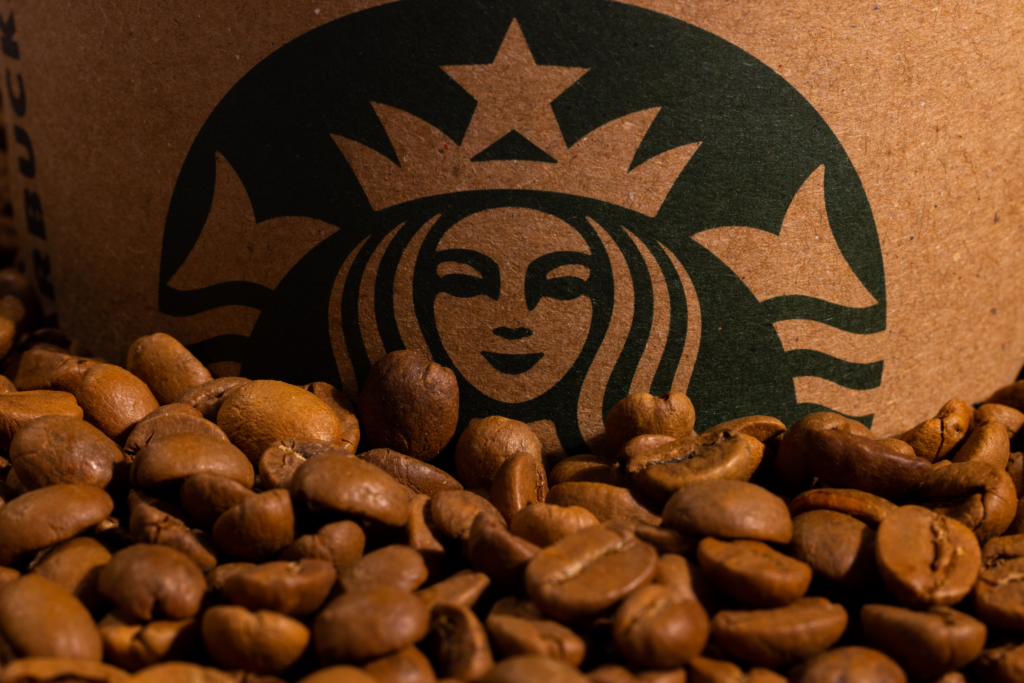Starbucks results tell us something about how the economy is growing
Starbucks’ earnings surpassed analysts’ profit expectations last quarter, sending the stock up 11 percent since last Thursday when the company reported earnings for fiscal year 2023. There was an approximately $10 billion increase in the market capitalization of Starbucks on Thursday.
The trustees attributed much of the coffee chain’s success this quarter to a new plan to improve working conditions in stores aimed at helping employees do their jobs better. Starbucks improved pay and scheduling headaches for store employees, replaced old equipment and cut turnover, all as part of an effort to “revitalize the partner culture at Starbucks,” CEO Laxman Narasimhan told investors on an earnings call. Given the results that Starbucks published, it seems to be working and may be emblematic of a trend across the economy.
Starbucks saw strong results across the board in terms of revenue, same-store sales, transactions and check size, which it partly attributed to its ability to be more productive. This is a trend that has been widespread across the economy in the third quarter as productivity increased along with workers’ wages. As the Axios Markets newsletter pointed out, economists have been surprised after years and years of stagnant productivity, including two straight quarters of decline in 2022, but Starbucks’ blowout quarter is an early sign that this won’t be business as usual.
Since October 2022, when Narasimhan took over as CEO from founder Howard Schultz (and inherited a toxic dynamic between the company and a restive union movement), the new boss has undertaken an extended effort to rehabilitate the company’s relationship with its in-store employees. He visited shops across the country, took 40 hours of barista training and even worked as one – something he promised to do once a month from now on. The last quarter, Narasimhan said, was proof that the company’s efforts to rebuild that relationship were paying off. And he has put his money where his mouth is, implementing a $450 million plan to make its stores run more smoothly and help baristas do their jobs faster.
This was a point echoed by CFO Rachel Ruggeri. “The investments we have made are driving growth – investments in our partners, in wages, in training, in our new stores, in equipment,” she said.
A blowout quarter and a big investment in staff
Starbucks’ results for this strong quarter saw it exceed expectations on revenue, which was $9.37 billion compared to an expected $9.29 billion. The $36 billion in revenue it had in fiscal year 2023 represented a 12 percent increase over the previous year. The improved work environment and investment in labor relations led Starbucks to report an 8 percent increase in comparable store sales globally, driven by a 5 percent increase in average order and 3 percent increase in comparable transactions.
“We did all this by investing over 20 percent of this year’s profits back into our store partners through wages, training, equipment and new store growth,” Narasimhan said. “All this is further proof that our strategy is working.”
Last fall, the company rolled out a plan to overhaul its store operations and make it easier for baristas to make its many famously complicated and time-consuming iced drinks, which were also a major source of union discontent. In the last quarter, the company installed 550 new nugget ice cream machines, 600 single-cup brewers, and rolled out portable cold foamers to all U.S. stores, according to Narasimhan. The idea behind the plan was to give more time back to baristas – and ultimately to customers. The key was to increase speed while allowing customers endless possibilities for customization, which comes with a higher price. “Our customers continued to favor more premium drinks, creating a new normal in terms of mix and match,” Ruggeri said during the earnings call.
The increased efficiency of U.S. stores was one of the primary factors in the operating margin increasing by 3.1 percentage points from the previous year, to 18.2 percent, according to Ruggeri.
All this has helped to improve conditions for Starbucks employees. The company pointed to a 10% reduction in staff turnover and a 16% increase in the length of barista time. Baristas also saw significant improvements in working hours, which increased by 5% in the quarter, and wages, which increased by 20%.
Productivity increases across the economy
The trends at Starbucks point to similar directional trends across the US economy where productivity gains have coincided with growth in hourly wages.
Total productivity in the US grew by 4.7% in the third quarter compared with the second quarter. This is the highest quarterly growth rate since the third quarter of 2020, which came just after the economy crashed in the second quarter of that year due to the pandemic. At the same time, hourly compensation increased by 3.9% in the third quarter.
When productivity, which measures the output of the economy against total hours worked, goes up, it means that more goods and services are produced with the same number of hours worked. It generally helps everyone in the economy because companies can produce more without hiring more workers, meaning they don’t have to pass on their increased labor costs to consumers. But decades have passed since productivity was on a steady growth path, both in the US and globally. Coinciding with the productivity decline has been a widespread, decades-long retreat in capital spending – exactly the kind of thing Starbucks is fighting for here.
For example, Starbucks plans to invest $1 billion in salaries, employee training and new equipment for its stores next year, and it has set aside another $3 billion for capex, about 85 percent of which is spent on opening new stores and renovating existing ones. . The company expects to renovate around 1,000 stores in the US. Starbucks has business here, as research from Bank of America shows that S&P 500 companies have increased investment spending for nine consecutive quarters.
One of the reasons why companies like Starbucks may need to make such large investments is that the labor market is particularly tight at the moment. When unemployment is low, businesses often need to invest in ways to run their operations more efficiently, as they cannot rely solely on more workers to deliver more goods and services. The unemployment rate in October was 3.9%. In January this year it stood at 3.4%, the lowest monthly interest rate since May 1969.
On its earnings call, Starbucks said staffing and scheduling would be “areas of focus” next year, when the company plans to increase the number of stores by 4 percent in the U.S. to about 17,000 stores. By 2030, the company plans to build 17,000 new stores globally for a total of 55,000 locations. And Starbucks is counting on happier, higher paid and more productive workers when they open these stores.
About the Viking
With Viking’s signals, you have a good chance of finding the winners and selling in time. There are many securities. With Viking’s autopilots or tables, you can sort out the most interesting ETFs, stocks, options, warrants, funds, and so on.
Click here to see what Vikingen offers: Detailed comparison – Stock market program for those who want to get even richer (vikingen.se)













